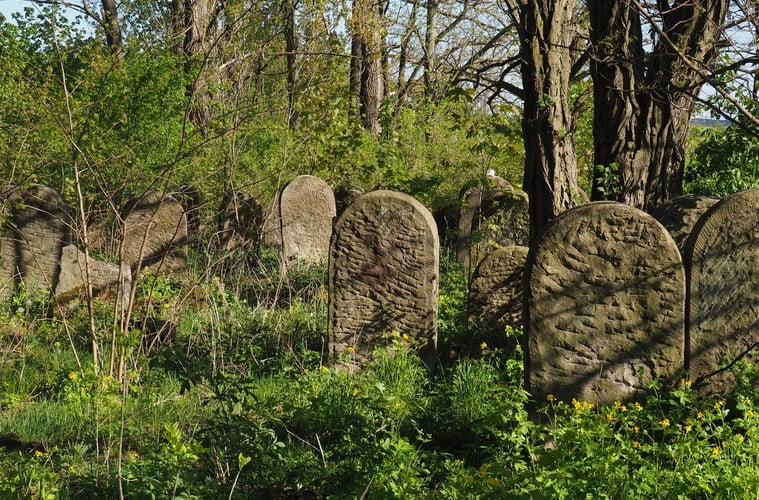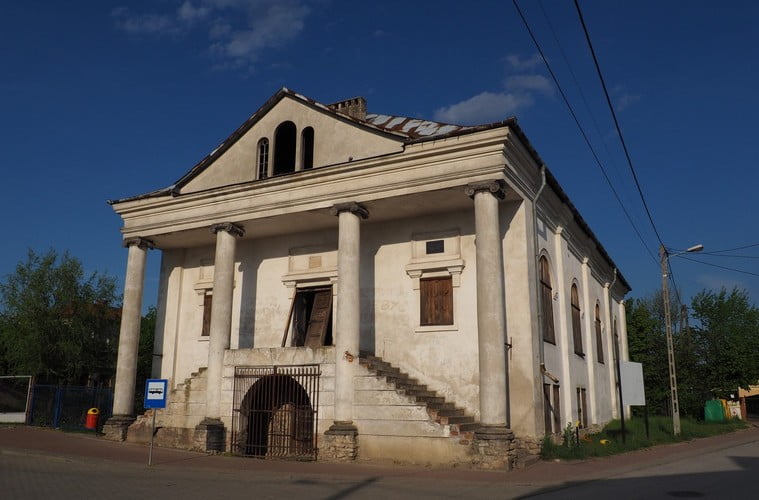Share This Article
Chęciny is a town located not far from Kielce, most often associated with the castle that towers above it. However, the Jewish Cultural Memory Center in Chęciny, housed in a former synagogue, is another attraction that makes this town well worth a visit!
The history of the Jewish community in Chęciny is long and fascinating, and during your visit to the center, you’ll have the opportunity to learn about it in detail. This visit can also serve as the beginning of a walk around Chęciny in search of traces of Jewish heritage—several of which can still be found.
Location and Access
The Jewish Cultural Memory Center in Chęciny is located in the former synagogue at 21 Długa Street. It takes just one minute to walk there from June 2nd Square, which many consider the town’s main market square. Chęciny lies near the Kielce Południe road junction on the S7 route between Kraków and Warsaw. The nearest large city is Kielce. You can get to Chęciny either by public transport or by car—the latter option takes only about 15 minutes.
Jewish Cultural Memory Center in Chęciny – opening hours and tickets
If you’d like to visit this place, it is open to guests every day, although the opening hours vary depending on the season. From April to September, the center is open from 10:00 AM to 6:00 PM. In October and March, it operates from 10:00 AM to 5:00 PM, and during the winter season (November to February), from 10:00 AM to 4:00 PM.
Tickets to the Jewish Cultural Memory Center in Chęciny cost 17 PLN for adults. Reduced-price tickets are available for 14 PLN and are intended for pupils, students, pensioners, retirees, and people with disabilities. If you’re visiting as a family (2 adults + 2 children), you can purchase a family ticket for 54 PLN total.
If you’re planning a visit to Chęciny, consider purchasing a combined ticket, which grants access not only to the Jewish Cultural Memory Center but also to the Royal Castle and Niemczówka Manor House. The combined ticket costs 39 PLN for adults and 32 PLN for those eligible for reduced fares.
For information about events organized at the center, it’s best to check their official website.
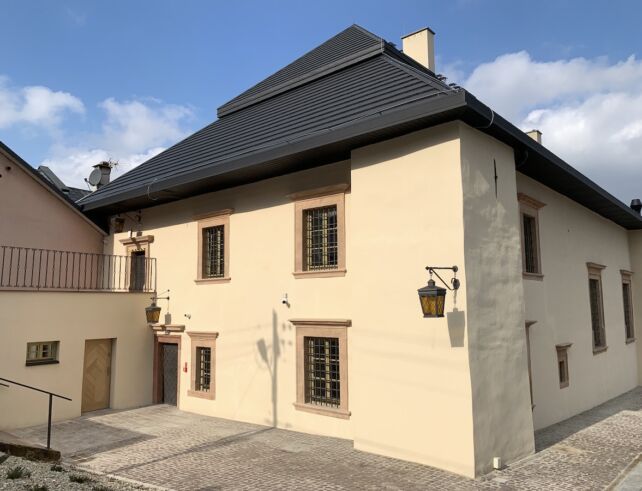
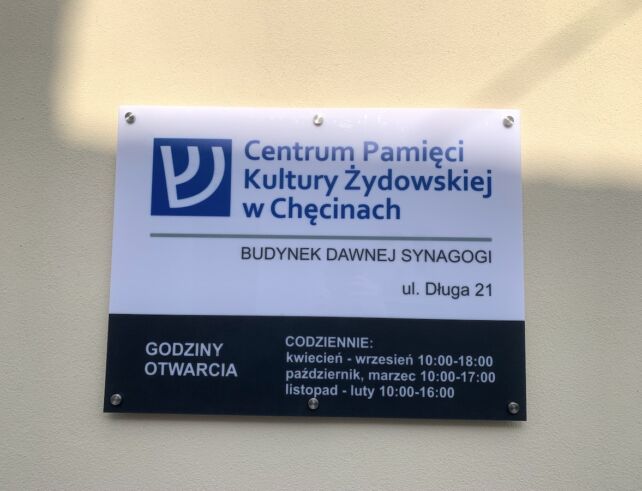
History of the Site
The privilege allowing for the construction of a synagogue in Chęciny was granted in 1638. Its interior was once richly adorned with polychrome decorations, which, unfortunately, have not survived to the present day. The richness of the original decor can still be seen in a preserved photograph from 1939, which is now part of the exhibition.
For many years, the building deteriorated. Then, between 1958 and 1959, a decision was made to renovate the synagogue and repurpose it to house the Municipal Office, Community Center, and the “Marmury” cinema.
In the 1990s, the synagogue underwent renovation and was handed over to the Jewish Community of Katowice. In 2019, the building was transferred to the municipality of Chęciny. Renovation work began in 2022, and in 2024, the building reopened as the Jewish Cultural Memory Center in Chęciny.
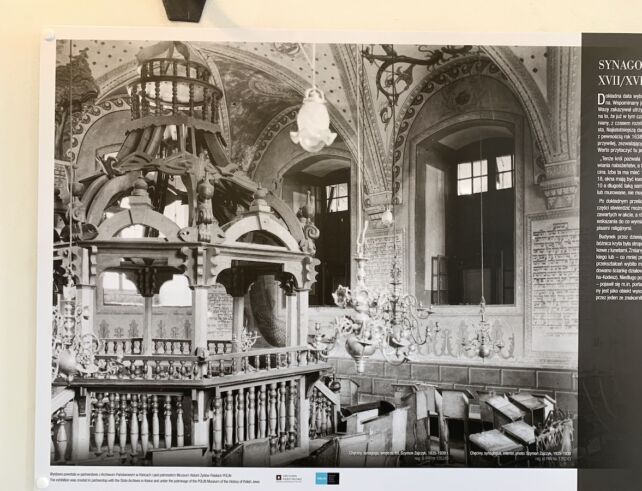
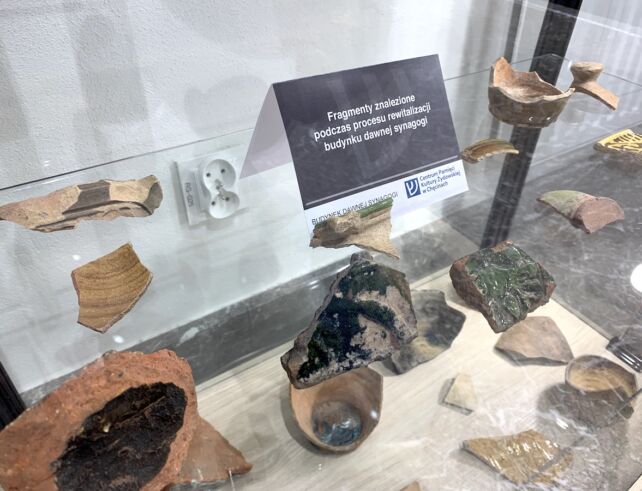
Exhibition – Prayer Hall
The Jewish Cultural Memory Center in Chęciny features two exhibitions on two floors, as well as workshop rooms. Before entering the former prayer hall, visitors can watch a short film about the building in the entrance area and view artifacts discovered during renovation work in a display case. The exhibition panels are in Polish and English, and QR codes provide access to a German-language version.
The prayer hall houses an exhibition focused on Chęciny and its Jewish community. It presents a detailed history of the local Jewish population, the synagogue itself, and the fate of Chęciny’s Jews during and after World War II. Display cases contain objects related to the topics discussed. One part of the exhibition explains typical elements found in synagogues, such as the Aron ha-Kodesh – the Torah ark – located centrally on the wall and made of local stone.
An interesting element is a panel dedicated to other sites in Chęciny linked to the town’s Jewish heritage. Thanks to this, a visit to the Jewish Cultural Memory Center can serve as a great starting point for a heritage walk through the town.
One thing that particularly caught my eye was the emptiness of the prayer hall’s interior. As seen in the historical photograph on display, the original décor was richly ornate, while today the walls are completely white up to the ceiling. It would be wonderful to recreate some of the original polychrome paintings, or if that proves too difficult or costly, modern technology could be used to project parts of them onto the walls or highlight them in another way. This would allow visitors, who may not notice the historic photograph, to imagine the synagogue in its former glory.
There is also a visible mark on the floor where the bimah once stood. To make the room feel less empty and austere, a spatial visualization of the bimah could be placed there — especially since its appearance is well documented.
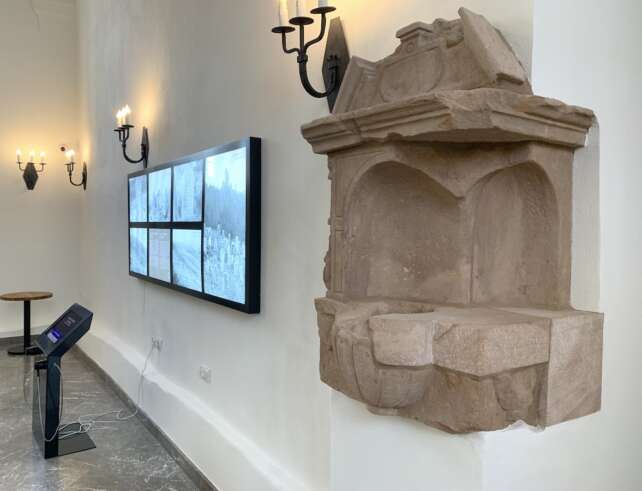
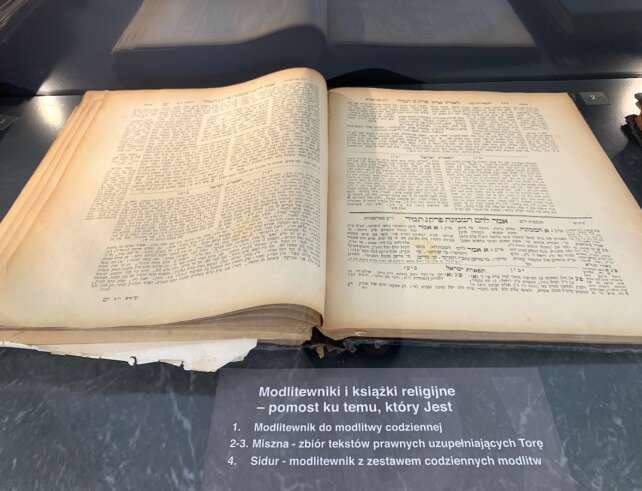
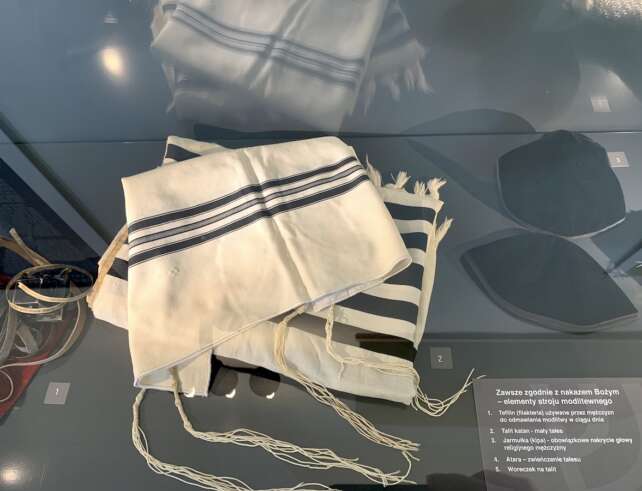
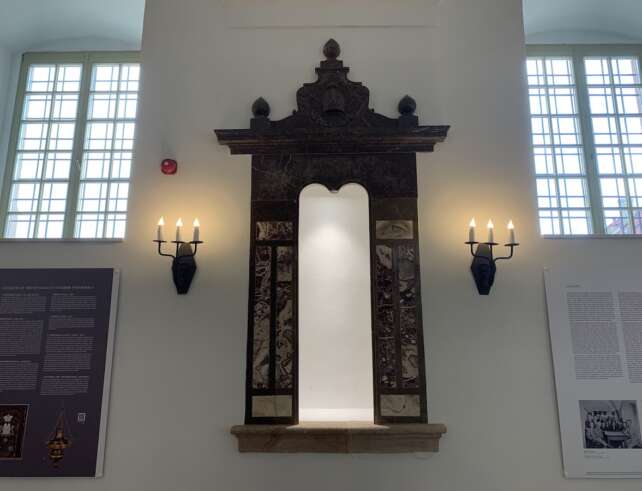
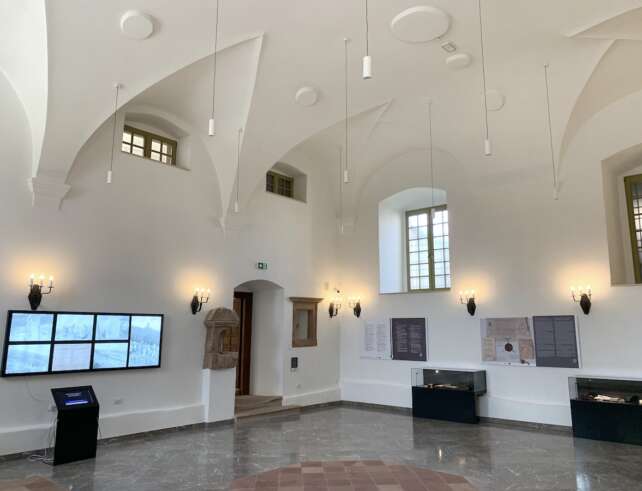
Exhibition – Women’s Gallery (Babiniec)
The Jewish Cultural Memory Center in Chęciny essentially consists of two main parts. One of them, the prayer hall, we’ve already visited. The second is the so-called “babiniec” – the former women’s prayer area. Today, this space hosts an exhibition devoted to Judaism.
The visit begins with a small photo gallery of Jews from Chęciny. For me, this is a powerful reminder that before World War II, people in Polish towns and cities — Jews and non-Jews alike — lived side by side, through good times and bad.
From the display cases and panels, we learn about Jewish traditions related to weddings and funerals. A dedicated panel presents Hasidism, a movement particularly significant in the context of the Jewish community in the Świętokrzyskie region. Other panels describe the role of the home in Jewish family life. Display cases also contain objects related to religious rituals and Jewish holidays.
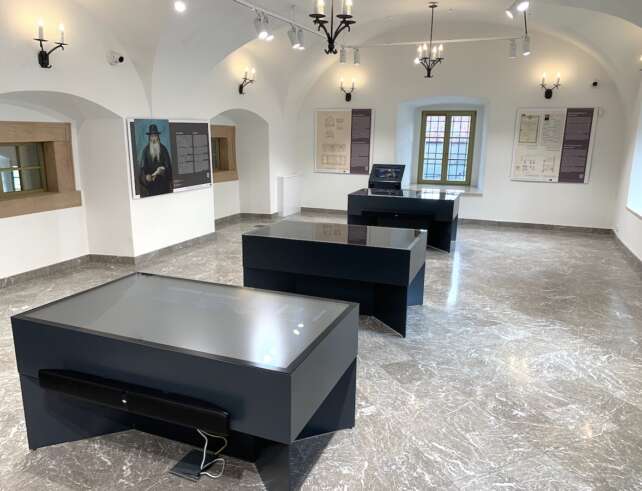
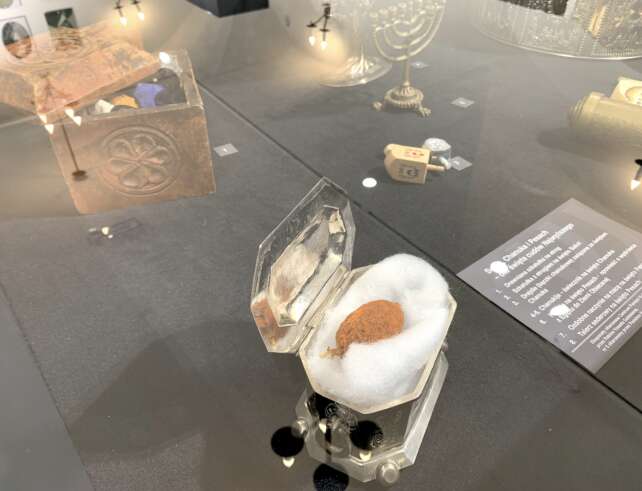
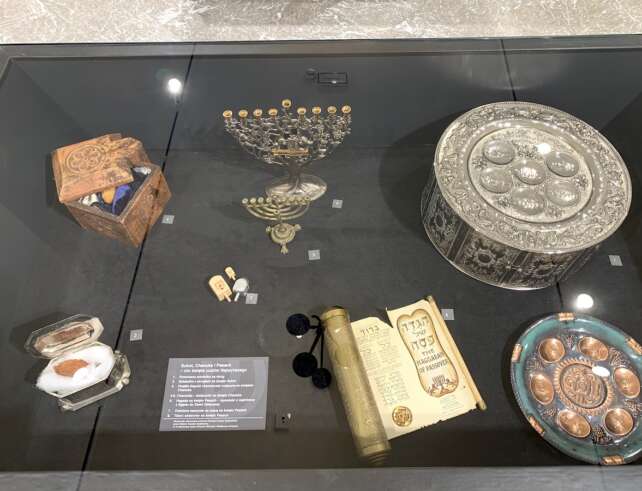
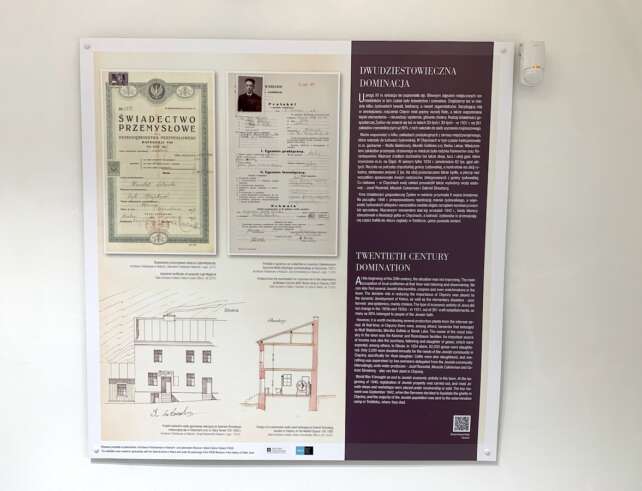
Jews in Chęciny
The history of Chęciny likely began around the 12th century. Originally, the settlement was located a few kilometers away from its current location, in what is now known as Starochęciny. Chęciny was granted town rights in 1325 by King Władysław the Elbow-high (Łokietek). Over the years, the town developed steadily, but it was repeatedly struck by disasters — among them fires in 1407, 1465, 1507, 1580, 1607, and subsequent years.
The first written mention of Jews in Chęciny appears in a royal inspection from 1565. Not long after, in 1626, the first written reference to a Jewish community in Chęciny can be found. In 1638, the Jews of Chęciny received a royal privilege from King Władysław IV Vasa allowing them to build a synagogue. Subsequent Polish kings continued to grant them additional privileges.
By the mid-19th century, Jews made up more than three-quarters of Chęciny’s population. A devastating fire in 1905 destroyed many Jewish buildings, and the proportion of Jewish residents began to decline. By 1921, Jews still constituted just over half of the town’s population.
Chęciny also suffered during World War II. In 1941, a ghetto was established in the town, housing around 4,000 people. A year later, it was liquidated, and most of Chęciny’s Jews were deported to Treblinka.
Is it worth visiting?
The Jewish Cultural Memory Center in Chęciny is a fantastic example of a place that combines tourism with preserving heritage and uncovering local history. The former synagogue building had to wait patiently for its renovation, but looking at it today — it was definitely worth the wait!
The thoughtful local exhibition, the wealth of information on Judaism, and plans for interactive workshops on the subject make me believe that the Jewish Cultural Memory Center in Chęciny is a place full of potential. It’s a great addition to the town’s tourist offer — and perhaps even the beginning of a new chapter for Chęciny.



